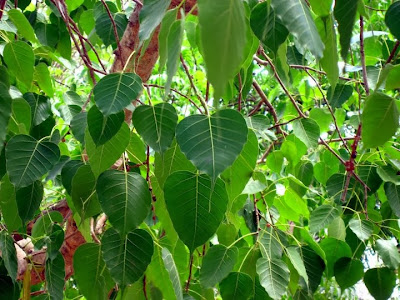 |
| Emblica officinalis- A rich source of vitamin C |
Indian Gooseberry (Emblica
officinalis), commonly known as amla, has been used to treat various
health-related problems dating back centuries. Amla has
antioxidant properties due to its rich vitamin C content. It is also rich in tannins and
other polyphenols, flavonoides and kaempferol.It has aperient,
antidiarrhoeal, antispasmodic, antioxidative, aphrodisiac, astringent,
carminative, diuretic, expectorant and laxative properties.
Let's learn more about the herbal
remedies with amla in curing some of the common diseases of the modern
world.
- Acidity: Powder dry amla fruits, and add a pinch of asafetida and rock salt to it. Take a tsp of the mixture with lukewarm water after meals.
- Asthma: Mix powdered amla (1 tbsp), mulethi roots (4 tbsp), guduchi (Tinospora cordifolia) stems (2 tbsp), ginger roots (1/2 tbsp), harra fruits (1tbsp), nagarmotha (Cyperus rotundus) roots (1tbsp) and chirchira (Achyranthes aspera) leaves (1/2 tbsp). A tsp of the same should be taken after meals with water.
- Arthritis: Prepare a mixture of amla fruit powder (1 tbsp), pipli (Piper longum) fruits (1 tbsp), kantakari (Solanum virginianum) whole plant (1 tbsp), ashwagandha roots (1 tbsp), harra (Terminalia chebula) fruits (1 tbsp), bahera (Terminalia bellirica) fruits (1 tbsp), kachur (Curcuma zedoaria) roots (1 tbsp) and eranda (Ricinus communis) roots (1 tbsp). Take a tsp of the preparation with lukewarm water before meals.
- Indigestion: Prepare a mixture of amla (2 tbsp) with Isubgol (Plantago ovate) husk (2 tbsp), harra fruits (1 1/2 tbsp), kalinga (Holarrhena pubescens) bark (1 tbsp) and swarnamukhi (Cassia senna) leaves (2 tbsp). Administer a tbsp before going to bed.
- Dysentery: A teaspoon of dried amla fruit powder taken with equal proportions of harra powder is said to be effective against dysentery.
- Healthy hair: Soak two tablespoons each of powdered amla and reetha (Sapindus emarginatus) fruits overnight. Next morning, use it for hair wash. This formulation is also known to strengthen the hair roots and make hair healthy.
- Immunity: Shade dry and powder amla fruits. Store the prepared powder in an air-tight container. Drinking a tsp of amla powder with water every day helps improve immunity.
- Skin problems: Mix powdered amla fruits (1 tbsp) with neem bark (1tbsp) and a pinch of turmeric. Apply a paste of this herbal preparation over the affected skin.
- Diabetes: Mix a tbsp of amla fruit juice in a cup of fresh bitter gourd juice. Have it daily for two months to control diabetes.
- Throat infection: Mix powdered amla (1 tbsp) with mulethiroots (3 tbsp), pipli fruits (1 tbsp), harra fruits (1 tbsp), kungyi (Sida cordifolia) roots (1 tbsp) and bahera fruits (1 tbsp). One tspof the formulation can be administered twice a day with water.
- Weight loss: Prepare a mixture of powdered amla (1 tbsp), gokshura (Tribulus terrestris) fruits (2 tbsp), harra fruits (2 tbsp) and ginger roots (1 tbsp). A tbsp of the mixture can be taken with warm water after meals.


.jpg)

.jpg)
.jpg)

.jpg)
.jpg)


.jpg)


_leaves_at_Narendrapur_W_IMG_4101.jpg)
.jpg)







.jpg)
